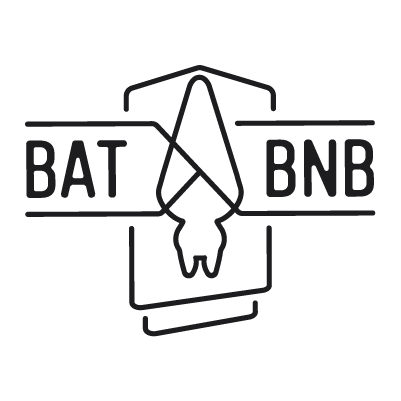How to turn your Yard into a Haven for Wildlife
February 18 2025 – Jessica Woodend
Easy Ways to Support Bats, Birds, Pollinators, and More!
Imagine stepping into your backyard and hearing the soft hum of bees, the flutter of butterflies, and the rustle of birds and small mammals finding refuge in the trees. A backyard teeming with life isn’t just beautiful—it plays a crucial role in supporting local ecosystems.
By making thoughtful changes, you can transform your outdoor space into a wildlife haven, providing shelter, food, and water for countless species, including bats, birds, pollinators, and beneficial insects. Whether you have a sprawling garden or a small patio, here’s how to make a difference.
1. Plant Native Flowers to Attract Pollinators
Bees, butterflies, hummingbirds, and so many other animals rely on native plants for nectar and pollen. In return, they pollinate flowers and crops, supporting the entire food chain. Native plants require less water and maintenance than non-native species, making them more sustainable.
Some examples of native plants for pollinators (check with your regional native plant society to make sure these are local to your area):
- Milkweed (essential for monarch butterflies)
- Bee balm (a favorite of hummingbirds and bees)
- Coneflowers (attracts butterflies and provide seeds for birds)
- Lavender (great for bees and smells amazing!)
- Goldenrod (a late-season bloomer that supports migrating pollinators)

2. Install a Bat House to Support Natural Pest Control
Bats are one of the most effective (and natural) forms of pest control. A single bat can consume thousands of insects in just one night, helping to keep mosquito populations in check. By installing a BatBnB bat house, you’re giving bats a safe place to roost, especially in areas where their natural habitats are disappearing.
Tips for Attracting Bats:
- Mount your bat house at least 12-20 feet high on a pole or the side of a building.
- Choose a sunny location that gets at least six hours of direct sunlight.
- Keep the area free from bright artificial lights to encourage bat activity.
- Avoid placing bat houses on trees, as they are harder for bats to access and more vulnerable to predators.
3. Provide Shelter for Birds, Small Mammals, and Insects
Creating shelter is one of the best ways to encourage wildlife to take up residence in your backyard. Birds, small mammals, and insects all need safe spaces to hide, nest, and overwinter.
Ways to Provide Shelter:
- Leave Leaf Litter & Brush Piles – Instead of clearing every leaf in the fall, let some areas stay natural. Leaves provide habitat for insects, frogs, and small mammals.
- Install Bird nest boxes – Different bird species prefer different nesting boxes, so research what works best in your area.
- Let Dead Trees Stand – If safe to do so, dead trees can provide nesting cavities for owls, woodpeckers, and other species.
4. Avoid Harmful Pesticides and Herbicides
Many common pesticides and herbicides harm not only pests but also beneficial insects, birds, and even small mammals. Instead of using chemicals, try eco-friendly alternatives.
Safer Pest Control Methods:
- Encourage Natural Predators – Bats, ladybugs, praying mantises, and birds eat garden pests.
- Plant Companion Crops – Marigolds, basil, and nasturtiums can naturally repel unwanted insects.
5. Add Night-Friendly Features for Nocturnal Wildlife
Your backyard shouldn’t just be a daytime retreat! Many animals, including bats, moths, owls, and fireflies, are most active at night.
How to Make Your Backyard Night-Friendly:
- Minimize Artificial Lights – Bright lights disrupt nocturnal animals. Use warm, low-light bulbs and motion-sensor lighting when possible.
- Plant Night-Blooming Flowers – Flowers like evening primrose and moonflower attract night pollinators like moths.
- Reduce Noise Pollution – A quiet backyard is more welcoming to wildlife. Consider planting dense shrubs to help absorb noise from roads or neighbors.
6. Get Involved in Local Conservation Efforts
Your backyard can be a small but powerful part of a larger conservation movement. By participating in community efforts, you can make an even bigger impact.
Ways to Get Involved:
- Join a local wildlife gardening group or conservation organization.
- Participate in citizen science projects like the Audubon Society’s Great Backyard Bird Count or Bat Conservation International’s Bat Monitoring Programs.
- Encourage neighbors to create wildlife corridors by planting native species and reducing pesticide use.
Creating a Backyard Sanctuary for Wildlife Starts with Small Changes
By making your outdoor space more inviting to wildlife, you’re helping to support local ecosystems while enjoying a thriving, biodiverse backyard. Whether it’s adding a bat house, planting native flowers, or simply letting leaves decompose naturally, every action counts.





0 comments